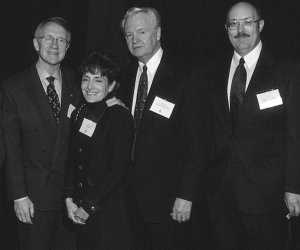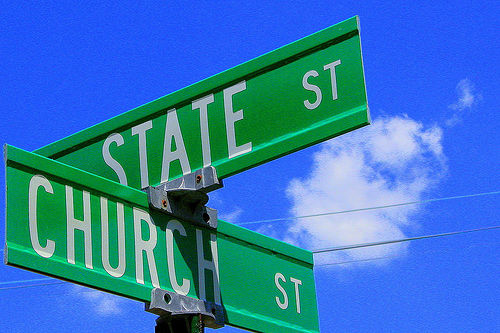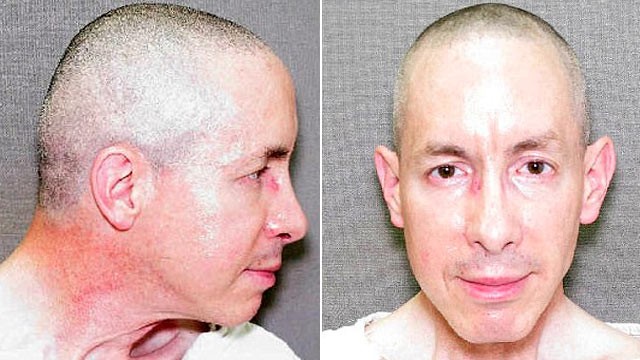Guest Post By Warner Woodworth
Warner Woodworth is a Global Social Entrepreneur and Emeritus Professor of the Marriott School of Management, Brigham Young University. Author of hundreds of articles and books, recipient of numerous awards around the world, he is a leading Mormon humanitarian and founder of some 30 NGOs.
While much has appeared in the media during this month’s 50th anniversary of America’s War on Poverty, we need to also remember the Mormon War on Poverty which occurred during the same five decades. The LDS Church had already launched its Welfare program by the state of the union address in January 1964 when President Lyndon Johnson (LBJ) called for a new American fight to eradicate the suffering of impoverished people (Johnson, 1964).
Early in my career, I too became a Mormon warrior fighting against poverty, not only in America, but throughout the world (Woodworth, Working Toward Zion, 1996; See also LDS economist Garth Mangum’s book, 1993). My life’s calling or mission has been to not only seek to reduce the numbers of poor LDS families, but Catholics, Protestants, and Muslims, as well. I’ve been blessed by the Lord to not just teach Sunday School or serve in various bishoprics. But in addition, the Spirit has guided me to initiate various strategies on behalf of the poor. Our founding prophet, Joseph Smith, declared that a true saint with the love of God in one’s heart “ranges through the whole world, anxious to bless the whole human race” (2014). More than ever before, these past few decades have spurred Mormons to empower the poor and reduce human suffering.
The Mormonism practice of serving the poor began to be greatly accelerated beginning in the 1980s, when church members from the base pushed the idea of a special fast day for 24 hours that would then give the equivalent of two meals to combat the crisis in East Africa, an amount generating $10 million. Food, clothing, emergency supplies, and cash were given through such agencies as the International Red Cross, AfriCare, Catholic Relief, and others. This action convinced the brethren that special humanitarian funds, not just traditional tithing monies, could be harnessed in a unique Mormon War on Poverty.
Some liked-minded friends collaborated with me next in calling for the establishment of the church’s Humanitarian Services, and it eventually became a department at church headquarters to find other global needs and address them, with both monetary donations and technical expertise. Although many associates, as well as employees at church headquarters doubted such a thing could occur, it finally did in the late 1980s. These included such ventures as establishing irrigation systems in East Africa, digging wells in Nigeria, and providing medical services to poor countries.
The good done through this effort led to another initiative in the Mormon War on Poverty. In 1991 a huge LDS Humanitarian Center was established in Utah near church headquarters (2014). Each year, from in-kind donations, it ships humanitarian kits—either newborn kits for new mothers, hygiene kits for those in natural disasters, or school kits for Third World children—all assembled by LDS groups. It also sends millions of pounds of donated clothing and shoes, medical equipment, and hand-tied quilts made by Mormon Relief Society members, the world’s largest women’s charity.
The center works alongside government programs such as the Utah Job Service. Together they provide employment, worker education and job skills for low income, international, and minority residents in the Salt Lake area. Clients are helped to learn English so they may eventually move on to regular jobs in the private sector after 18 months. Refugees are assigned a Mormon mentor who provides coaching in work skills, resumes, and personal habits that will help develop successful job qualifications. Today millions of dollars have been spent, not only in Utah, but globally, to fight poverty and create jobs.
Having gradually developed expertise in broader humanitarian work, the next War on Poverty initiative advocated by many LDS experts in the social sciences, including myself, was a sort of Mormon Peace Corps, a feature of the federal government launched by President John F. Kennedy, but greatly expanded by his successor, LBJ. In our church, it was the creation of Latter-day Saint Charities (2014), a nonprofit dedicated exclusively to sending out LDS volunteers to serve non-Mormons around the globe. It includes a range of services: employment centers, social services, the purchase of goods locally throughout the world, canneries and farms for food production and processing, and so forth. Since then, LDS Charities has been registered as an NGO in a number of nations hit by civil unrest, floods, famines, earthquakes, and other disasters. These activities have enabled the Church to channel hundreds of millions of dollars in relief and development throughout the earth.
LDSC relief and development projects have been implemented in some 180 nations. They fit the view of Joseph F. Smith, who taught, “Our idea of charity. . .is to relieve present wants and then to put the poor in a way to help themselves so that in turn they may help others” (1905). In other words, LDS Charities ignores religious affiliation, race, nationality, and seeks to operate on such values as community support, self-reliance, sustainability, and mutual care for one another.
The Mormon War on Poverty’s next major step in the evolution of service to those in need was to set up the Perpetual Education Fund (2014). This program was announced by President Hinckley at General Conference on March 31, 2001. I had begun discussing this idea in the late 1980s, and proposed the creation of a Perpetual Education Fund (PEF, 2014), based on the early pioneer model known as the Perpetual Emigration Fund. It had brought thousands of converts from around the world to settle in Utah and build Zion. Some of my ancestors benefitted from it, even though I suspect most never could repay the debt. When I began giving speeches about this radical idea and discussing it with church managers, they tended to discount the proposal as “crazy,” and assured me our church would never get into the business of giving loans to its members.
So with a few associates, I began experimenting with the obtaining of private donations from wealthy Latter-day Saints since in 1995, and we created education funds for returned missionaries in such countries as Brazil, Chile, and Mexico. In spite of seeing the need, and in spite of realizing we could successfully pull together the necessary funding for private ventures through our NGOs, some officials did not like the idea, or felt it was simply unnecessary. But our data were convincing, and eventually the decision at church headquarters was reached that this could do much to empower young RMs seeking a better life after their missions. Thus, President Hinckley announced PEF’s formation in general conference in spring 2001, declaring: “I believe the Lord does not wish to see His people condemned to live in poverty. I believe He would have the faithful enjoy the good things of the earth. … In an effort to remedy this [lack of opportunity], we propose a plan … which we believe is inspired by the Lord. … We shall call it the Perpetual Education Fund” (Hinckley, 2001).
A final element of the Mormon War on Poverty is that of Helping Hands (2014) which has grown to become an official, priesthood-led program for LDS members to do volunteer work in their own communities. Most Mormons, including those who are managers of church welfare programs and most general authorities, tend to think this was an idea initiated at church headquarters. But they err. Instead, it was created by a couple of stake presidents in Sao Paulo Brazil who sought to involve their members in reaching out to do good in their local communities (Woodworth, 2011). As most bishops and stake leaders know, Latter-day Saints are heavily caught up in their own ecclesiastical activities—teaching Sunday School, serving in a Relief Society or priesthood capacity, doing home teaching, and so forth. While all such work is important, and certainly helps church members become involved and congregations operate successfully, many are far too inwardly focused. As general authorities have suggested, we need to be connected to local schools, our non-Mormon neighbors, the PTA, kids’ sports leagues, and so on.
Rather than simply hear talks about serving their friends who may not be LDS, these Brazilian leaders and their wives took the initiative themselves. Two of them told me they planned their first event for July 24, 1997, the day when Utah would be holding its state holiday to celebrate the arrival of Mormon pioneers in Utah back in 1847. There in Sao Paulo they prepared to launch several huge projects, calling this event, “Maos que Ajudam,” i.e. “Helping Hands.” The plan was to mobilize stake members who would collectively give 1,000 hours of service in remodeling five local and run down public schools. It was a huge service project success, and it also generated considerable publicity for the church. So local Brazilian leaders decided to expand it the following year so as to involve other stakes who wanted to join.
By 2010 it mushroomed to over 120,000 volunteers! Over the years it was gradually, replicated elsewhere on an ad hoc basis. Headquarter church officials became aware of the program, and eventually it was brought under the umbrella of the church. Today, thousands more volunteers do Helping Hands projects worldwide. But still today they are usually not aware that the T-shirts they wear are the colors of the Brazilian flag, yellow, green, and blue. Nor do they know that in Brazil, the jargon of Helping Hands includes the words, “Um Sábado de Solidário,” a Saturday of Solidarity, a word tied to Brazil’s trade unions and the leading political party of the country, the Workers’ Party of leftist leaders within organized labor (Woodworth, 2011).
As the church’s website about Helping Hands suggests, it shows “that Latter-day Saints are Christians who contribute to the good of their communities.” (Helping Hands, p.1, 2014). It also generates a great deal of public relations through the local Public Affairs offices as we stretch to extend our image showing Mormons are not self-centered, that we care about our neighbors and want to improve society. Indeed, Helping Hands is a bright shining star that evidences D&C 58:26-27:
For behold, it is not meet that I should command in all things; for he that is compelled in all things, the same is a slothful and not a wise servant; wherefore he receiveth no reward. Verily I say, men should be anxiously engaged in a good cause, and do many things of their own free will, and bring to pass much righteousness….
On the church website, Helping Hands is described as “an optional” church program, suggesting that it is not yet a core requirement of LDS membership (2014). It differs from LDSC and PEF also in that it’s not a financial donation. Rather, it is a donation of one’s time and energy. It doesn’t emphasize the needs of far off, struggling villages, but instead focuses on the here and now in one’s own community—painting the widow’s house, weeding the school yard, refurbishing the inner city library, cleaning up the destruction of a typhoon, replanting trees in a city park, and so forth. As one who served a mission to Brazil in the early 1960s, and who has returned almost annually since and helped a number of nonprofits and NGOs in that nation flourish and grow, I’m personally very pleased this initiative has expanded throughout the church. I like it because it can be started and carried out by local members who see community needs and have a heart to do good. Indeed, they act according to the Prophet Joseph’s explanation of the very word, Mormon. As he put it, the term means “more good.” This is the foundation for all the positive efforts the LDS Church exerts around the globe in doing good.
Other badly needed reforms are now taking place to revamp the church employment programs. Some members for years have called for a shift from emphasizing resumes and corporate jobs to microentrepreneurship and family economic self-reliance. Leaders in this area of the church’s programs are beginning to explore the hiring and use of new self-reliance managers around the globe who will train and oversee several job creating activities at once: microlending, small enterprise training, computer skills education, solidarity group support or mentoring, start-ups, and other features. These will combine to offer a more holistic approach to strengthening families and helping parents achieve a degree of human dignity, not dependence.
As we heard President Obama say this week in his State of the Union speech in Washington, DC, we still have much to do to lift poor Americans from their travails. Many have acknowledged that The War on Poverty is still not finished. We need to raise the Minimum Wage to an appropriate level, fix the dangerous trend toward greater inequality of the last several decades, and more fully fund social programs that have a track record of improving people’s quality of life such as pre-school, food stamps, more jobs, aid to the elderly, support for single moms, empower women with the same labor rights and wages as men, etc.
Likewise, we in the church need to labor for the have-nots, whether in the United States or internationally. The LDS War on Poverty must continue to reach further. Today we still have far too many members trapped in debilitating effects such as hunger, unemployment, disease, lack of education—all which generate ongoing conditions of impoverishment. As we look back at the last five decades, may we be grateful for the blessings that have come from inspired church leaders and member initiatives. May we also look to heaven for a better future, for even more innovations that will serve destitute members and their neighbors in the coming years. May we all become change agents and provocateurs in the Mormon War on Poverty!
Sources
Doctrine & Covenants, 58: 26-27.
Helping Hands, http://www.lds.org/topics/humanitarian-service/helping-hands?lang=eng, accessed January 18, 2014)
Hinckley, Gordon B. “The Perpetual Education Fund,” Ensign, May 2001, 52–53. http://pef.lds.org/pef/Hinckley_PEF?locale=eng.
Johnson, Lyndon B. “State of the Union 1964.” Public Papers of U.S. Presidents, Lyndon B. Johnson, 1963-1964. Washington, DC: G.P.O., 1965, 1, pp. 375-380.
Latter-day Saint Charities. http://ldscharities.org/?lang=eng, accessed January 23, 2014.
LDS Humanitarian Center. http://www.lds.org/topics/humanitarian-service/center?lang=eng., accessed January 12, 2014.
Mangum, Garth L. & Bruce D. Blumell. The Mormons’ War on Poverty. Salt Lake City: University of Utah Press, 1993.
Perpetual Education Fund. http://pef.lds.org/?locale=eng, accessed January 9, 2014.
Smith, Joseph, Jr. http://www.goodreads.com/quotes/96380-a-man-filled-with-the-love-of-god-is-not, accessed January 19, 2014)
Smith, Joseph, Jr. (cited in book by Joseph Fielding Smith, ed., 1938) Teachings of the Prophet Joseph Smith Salt Lake City: Deseret Book, pp. 299–300.
Smith, Joseph F. ”The Truth about Mormonism.” In Out West, Vol. 23, 1905, pp. 239-255. http://www.lds.org/manual/teachings-joseph-f-smith/chapter-22?lang=eng
Woodworth, Warner P. Maos que Ajudam (Helping Hands). Unpublished Brazilian interviews, 2011.
Woodworth, Warner P. & James W. Lucas. Working Toward Zion: Principles of the United Order for the Modern World. Salt Lake City: Aspen Books, 1996.















